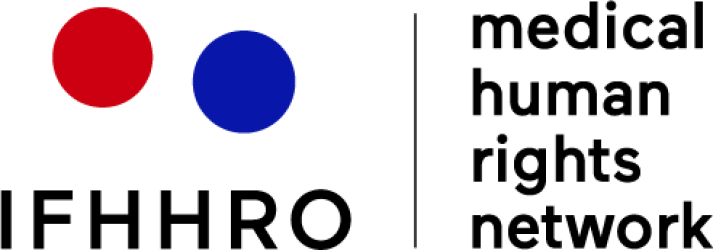What are essential medicines?
Essential medicines are medicines that should be available in adequate amounts, in the appropriate dosage, with assured quality and at an affordable price in functioning health systems at all times.[1] Medicines are determined to be “essential” when they are needed to satisfy the health needs of a population.[1]
The World Health Organization (WHO) has created a list of essential medicines that is reviewed every two years.[2] Since the first list was created in 1977, it has been updated more than a dozen times. Currently, the WHO Essential Medicines List includes 350 medicines that have been selected through an evidence-based process for their safety, effectiveness and value for money.[3]
Why is access to essential medicines a human rights issue?
In 1978, the WHO member states signed the Alma Ata Declaration on Health for All which recognized health as a human right. In practice, however, many people cannot obtain the medicines they need to stay healthy because they are too expensive or are no longer produced. In other cases, the only medicines that people living in low-income countries can obtain are toxic or ineffective.
What are the relevant sources?
The right to essential medicines is well-established in international law. According to the WHO, access to essential medicines is part of the right to health outlined in the WHO Constitution, the Universal Declaration of Human Rights, and the WHO Medium Term Strategic Plan.[5] In addition, the International Covenant on Economic, Social, and Cultural Rights (ICESCR) “recognizes the right of everyone to the enjoyment of the highest attainable standard of physical and mental health.”[6] In Article 12.2, the ICESCR lists a number of steps that should be taken by Member States including access to medicines and medical services.[5]
What are the relevant issues/problems with regards to access to essential medicines?
The barriers to access to essential medicines include:[7]
- prohibitive drug prices;
- lack of research and development of new drugs;
- lack of sustainable production;
- inefficient procurement;
- poor quality;
- and restrictive international trade agreements.
As a result of these barriers, one-third of the world’s population lacks access to essential medicines and this figure rises to half of the population in the poorest countries in Africa and Asia.[8]
How can the situation be improved?
The Agreement on Trade Related Aspects of Intellectual Property Rights (TRIPS) and several WHO resolutions have confirmed that low-income countries have the right to prioritize access to essential medicines over intellectual property. Unfortunately, poor countries are at a disadvantage in negotiations with multinational pharmaceuticals companies. As a neutral party, the WHO can facilitate access to essential medicines by countering the pharmaceutical industry’s influence and advocating on behalf of low-income countries during negotiations related to essential medicines.[9]
Governments should also ensure that their international trade agreements align with TRIPS stipulations. Nongovernmental organizations such as MSF and Oxfam have led campaigns to prevent the European Union (http://www.msfaccess.org/hands-off-our-medicine-campaign ) and the United States (http://www.msfaccess.org/about-us/media-room/press-releases/msf-urges-tpp-countries-not-abandon-public-health-bid-finalize ) from concluding agreements that would limit access to generic versions of essential medicines, which are needed by people living in countries with limited resources.
Citizens of WHO member states can help strengthen access to essential medicines by writing to their government representatives, signing the international petitions mentioned above, and generating awareness about this issue in traditional and social media among other activities.
This page was written by Tara Ornstein and last updated in May 2014.
Notes
[1] WHO. “Essential Medicines: Fact Sheet #325.” World Health Organization: Geneva; June 2010. URL: http://www.who.int/mediacentre/factsheets/fs325/en/
[2] Laing, Richard et al. “25 years of the WHO essential medicines lists: progress and challenges.” The Lancet; Vol. 36 (May 2003). URL:http://www.thelancet.com/journals/lancet/article/PIIS0140-6736%2803%2913375-2/abstract
[3] WHO. “Model Essential Medicines List.” World Health Organization: Geneva; March 2013. URL: http://www.who.int/features/2013/essential_medicines_list/en/
[4] United Nations. Prescription for healthy development: increasing access to medicines. New York; 2005. URL: http://www.unmillenniumproject.org/reports/tf_essentialmedecines.htm
[5] WHO. “Access to essential medicines as part of the right to health.” World Health Organization: Geneva; 2006. URL: http://www.who.int/medicines/areas/human_rights/en/
[6] Hogerzeil, Hans V. “Essential medicines and human rights: what can they learn from each other?” Bulletin of the World Health Organization: Geneva; May 2006, 84 (5). URL:www.who.int/bulletin/volumes/84/5/371.pdf
[7] MSF. Access Campaign. Medecins sans Frontieres: Geneva; 2014. URL: http://www.msfaccess.org/our-work/overcoming-barriers-to-access
[8] MSF. Access Campaign. Doctors without Borders USA: New York; 2014. URL: http://www.doctorswithoutborders.org/support-us/campaigns/access-to-medicines
[9] MSF. 134th WHO Executive Board meeting – Agenda item 9.7: Access to essential medicines. MSF: Geneva; 2014. URL: http://www.msfaccess.org/content/msf-intervention-access-medicines-who-134th-executive-board-meeting
